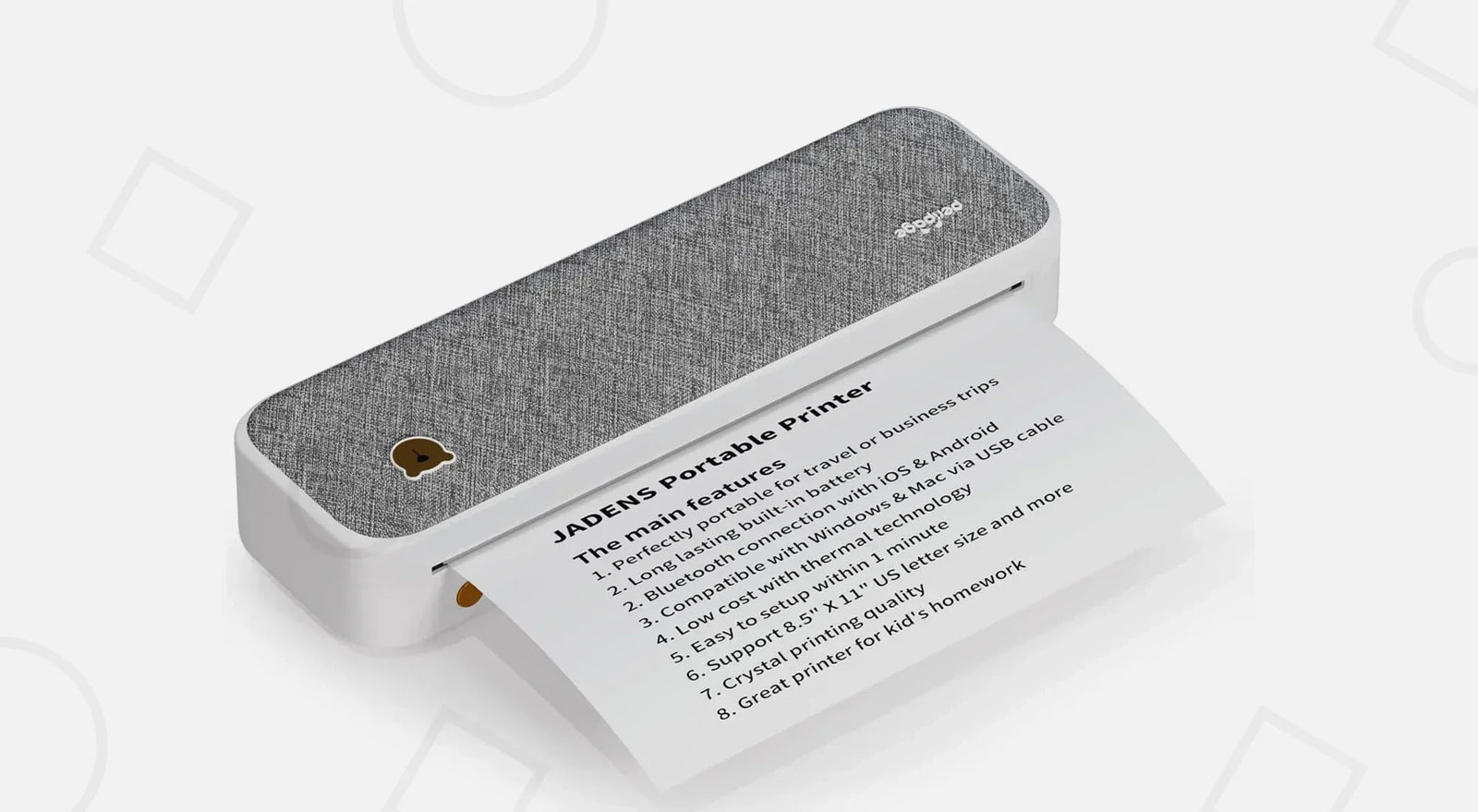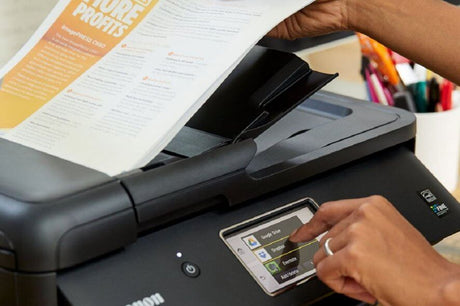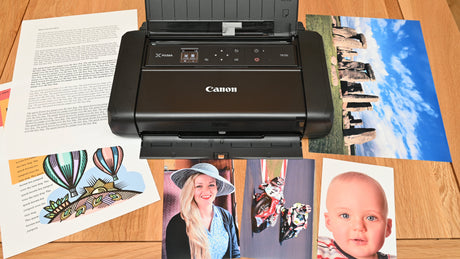The cutting-edge invention of inkless printers has had a great impact on the printing world. For years, inkjet and laser printers have been the norm in homes and offices. However, they are now up against competition from new, innovative inkless devices. So, which is better, an inkless printer or a traditional printer? In this blog, we'll look at the main differences, pros, and cons of both types. By the end, you'll have a clearer idea of which printer meets your needs best.
Contents:
- What Are Traditional Printers?
- What Are Inkless Printers?
- Key Differences Between Traditional and Inkless Printers
- Pros and Cons of Traditional and Inkless Printers
- Which Printer Fits Your Everyday Needs?
- Cost Comparison Example
- Future Trends and Outlook of Inkless Printers
- Quick Answer: Should You Choose Traditional or Inkless Printers?
What Are Traditional Printers?
Traditional printers use ink cartridges or toner cartridges to print text and images on paper. The two main types are inkjet and laser printers.
Inkjet printers: These machines spray liquid ink through tiny nozzles onto the paper. They are popular for photo printing because they are known for producing sharp and vibrant images. Common models include HP OfficeJet Pro 9010, 9012, and 9020.
Laser printers: These devices create an image on a drum via a laser beam. After that, toner powder is applied to the drum and heated to fuse it onto paper. Laser printers are fast, efficient, and ideal for black-and-white documents. Popular options are HP Color LaserJet Pro MFP M479fdw and Brother MFC-L3750CDW.
What Are Inkless Printers?
As the name suggests, inkless printers don't use ink or toner. Instead, they rely on alternative technologies to create images and text. Thermal printers and ZINK (Zero Ink) printers are two primary varieties of inkless printers.
Thermal printers: They apply heat to specially coated thermal paper. The heat will change the color of thermal paper and transfer it into the desired image or text. These printers are widely used for receipts, labels, and barcodes.
ZINK printers: ZINK paper has dye crystals embedded in it that are invisible until heated to activate them. The printer will create a full spectrum of colors by applying different temperatures to create a complete image.
Key Differences: Traditional vs. Inkless Printers
1. Ink or Consumable Costs
Traditional printers rely on ink or toner cartridges. They require regular replacement to function normally, and the cost adds up over time. Even with compatible supplies, you'll still be buying cartridges frequently.
Inkless printers skip ink altogether. Instead, they use special thermal or ZINK paper. While the printer itself may cost more upfront, you are able to save your money in the long run since there’s no need to replace any cartridges.
2. Printing Mechanism
Traditional printers work by applying liquid ink or toner onto paper. This can be done through inkjet sprays, laser transfer, or even dot-matrix systems.
Inkless printers, on the other hand, use heat-based methods. For example, thermal printers activate dye in special paper using heat. This creates prints without any liquid ink or toner at all.
3. Paper Compatibility and Versatility
When it comes to printing paper, traditional printers are far more tolerant. They can print on plain sheets, photo paper, card stock, and more. As a result, they can be of multiple uses for everything from office documents to high-quality photos.
Only certain thermal or ZINK paper can work on inkless printers. The kinds of projects you can print are limited by the high cost and difficulty of acquiring these papers.
Traditional Printers vs. Inkless Printers: Pros and Cons

Pros of Inkless Printers
Lower running costs: Fewer consumables mean less money spent on ink or toner, and maintenance is easier.
Less waste: Since there are no cartridges to discard, there is less waste and less of an impact on the environment.
Compact design: Many inkless printers are smaller and more portable, making them great for mobile work. Downtime is also reduced because there are fewer moving parts and no cartridges to change.
Durable prints: Some inkless technologies create prints that are perfect for labels or receipts because they are long-lasting and waterproof.
Cons of Inkless Printers
Limited print quality: Resolution and color accuracy are lower than traditional printers. A lot of inkless printers, particularly thermal printers, can only print in black and white.
Special paper needed: Certain devices require special paper, which is more expensive and more difficult to get than regular sheets.
Niche use cases: Inkless printers are usually best for receipts, labels, and shipping documents rather than everyday printing.
Pros of Traditional Printers
High resolution: Both inkjet and laser printers can produce sharp, detailed prints for graphics and professional documents.
Full color range: Traditional printers can produce thousands of colors for vivid prints using cartridges that contain black, cyan, yellow, and magenta.
Multifunctional: Many models double as scanners, copiers, and even fax machines. This adds more value and usefulness for traditional printers.
Wide supply options: Toner and ink are readily available in different price ranges. You'll also see many trusted third-party suppliers like ProlineOffice, which offers alternatives for big office brands such as HP, Brother, and Canon.
Cons of Traditional Printers
Higher Long-Term Costs: Traditional printers may have a low price from the beginning, but you need to replace ink or toner on a regular basis. Genuine supplies from brands like HP or Canon can be expensive, and even third-party options add up.
Increased Maintenance Needs: If inkjet printers are not used frequently, they may clog and waste ink. Laser printers may need occasional drum or roller replacements, and this would definitely add to your costs.
Environmental Concerns: Empty cartridges often end up in landfills and contribute to electronic waste. You would also waste a large amount of plastic in the packaging of liquid ink and toner.
Potential Mess: When replacing ink or toner, they might spill and leave stains. Thus, you need to treat them carefully, especially in homes or offices with kids or delicate equipment.
Which Printer Fits Your Everyday Needs?
Knowing the pros and cons of different types of printers is useful, but how do they apply to real life? Here are some common scenarios to help you decide:
| Scenario | Best Choice | Why |
| Business Receipts or Shipping Labels | Inkless (Thermal) | Fast, reliable, and no ink costs. Perfect for shops or online sellers. |
| School Assignments or Home Documents | Traditional (Inkjet or Laser) | Handles text-heavy pages, supports standard A4/Letter paper. |
| Photo Printing or Design Projects | Traditional Inkjet | Produces vibrant, high-resolution images with a full color range. |
| Traveling or Mobile Work | Inkless (ZINK mini printers) | Compact, wireless, and no need to carry ink cartridges. |
| Heavy Office Use (Thousands of Pages Per Month) | Traditional Laser | High-speed, cost-efficient bulk printing with multifunction features. |
Cost Comparison Example: Printing 1,000 Pages
To better understand the cost difference, let's look at an example of printing 1,000 black-and-white pages:
Traditional Laser Printer
Average toner cartridge cost: £60 (yields about 2000 pages).
Cost per page: about £0.03.
Total for 1000 pages: about £30.
Inkless Thermal Printer
Thermal paper roll (1000 pages): about £40 –£50.
Cartridge costs: No.
Total for 1000 pages: about £40–£50.
Takeaway: Traditional laser printers may still be cheaper for large-volume printing, but inkless printers save you from buying and replacing cartridges. The decision depends on whether you value lower upfront consumable costs or long-term savings on ink and toner.

Future Trends and Outlook of Inkless Printers
Inkless printing technology is still evolving, and the future looks promising. Here are some possible directions:
Color developments: Research is ongoing to increase resolution and broaden the color spectrum, even though current inkless printers have trouble reproducing colors with high quality. ZINK and other cutting-edge technologies might eventually compete with inkjet photo printing.
Expanded uses: As technology advances, inkless printers may be appropriate for educational purposes, creative endeavors, and even small-scale photo printing in addition to receipts and labels.
Sustainability: As consumers and businesses look for eco-friendly solutions, inkless printing offers clear advantages with less waste. Adoption may speed up as a result of this trend.
Market position: While traditional printers are unlikely to disappear soon – especially in offices and schools – inkless printers may carve out strong niches where portability, low maintenance, and environmental benefits are valued most.
Quick Answer: Should You Choose Traditional or Inkless Printers?
Choose an inkless printer: If your budget is tight, your printing is mostly limited to black-and-white labels, receipts, or simple shipping documents, and portability is a must.
Choose a traditional printer: If you want top-notch print quality, need to print professional-quality color documents or photographs, and want the highest paper flexibility. Traditional printers are a reliable, multifunctional choice for most homes, students, and small to medium businesses.
For the vast majority of everyday office and home users, traditional printers clearly win in print quality and versatility. Once you pick a dependable inkjet or laser printer, pairing it with high-quality, cost-effective compatible supplies (like cartridges and toner) is key to keeping it running smoothly.
Check out our ProlineOffice Store today to find the perfect cartridges or toner for your traditional printer. Enjoy crisp, professional prints every time!




